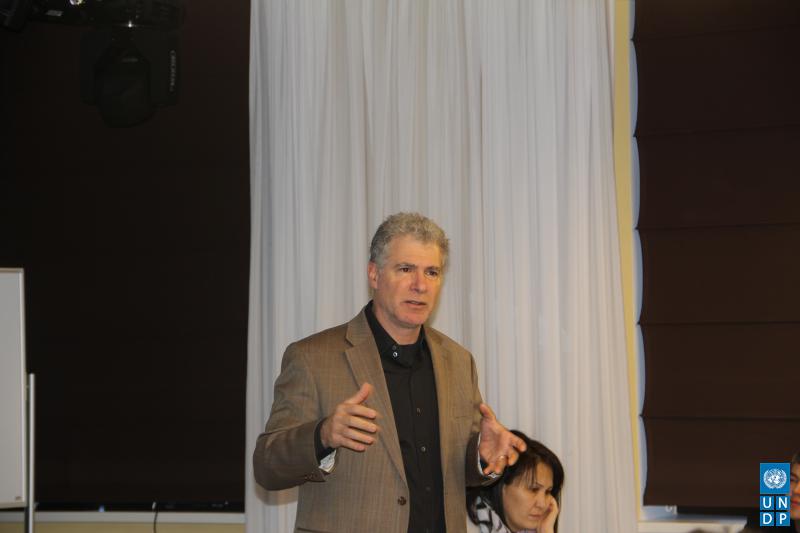ASTANA – An international conference focused on ecosystem services and the transition to a green economy took place in Astana on June 24. This event was organised by the United Nations Development Programme, BioFin, CB2 and GIZ (German International Cooperation). Participants from six countries discussed the best biodiversity and ecosystem management practices, implementing ecosystem services and the evaluation of natural resources.
“Kazakhstan has been cooperating with the United Nations Development Programme, the World Bank and other international organisations since 2003 and has succeeded in several national and regional projects focused on effectively managing ecosystems and biodiversity. Laws and regulations have been improved, special protections have been expanded and new methods of managing plants, animals, forests, fish ecosystems and water resources have been created,” Deputy Chair of the Forestry and Wildlife Committee of the Ministry of Agriculture of the Republic of Kazakhstan Kairat Ustemirov said.
He stated that new technologies for the conservation and sustainable management of natural resources were introduced at the conference. He said, “I hope that the success seen in Vietnam, Mongolia, Russia and Turkmenistan will guide Kazakhstan’s transition to establishing a green economy and the development of its eco services.”
Senior Technical Advisor of the BioFin Global Team, which is managed by the UNDP Ecosystems and Biodiversity Programme in partnership with the European Union and the German and Swiss governments, David Meyers said “BioFin is working on biodiversity financing in 30 countries around the world. Kazakhstan is one of the first countries to join this programme. The goal of BioFin is to better understand and integrate financial and economic issues into decision making on biodiversity and planning matters. Kazakhstan’s Green Economy Concept has three pillars: sustainable water usage, sustainable and high-performance agriculture and preserving and efficiently managing ecosystems.”
Meyers feels that ecosystem services and natural resource management are essential to the success of the green economy in Kazakhstan, saying “knowledge of ecosystems and their economic value is essential to aligning public and private incentives and investing in nature based infrastructure is an often overlooked but economical long-term solution.”
UNDP Biodiversity Project Manager Talgat Kerteshev noted that there is no regulatory and legal framework capable of attracting major natural resource consumers to Kazakhstan’s biodiversity conservation projects. He emphasised the fact that these organisations take advantage of the critical nature of certain biological and water resources and stated that it is necessary to create legal mechanism and an economic evaluation of the special protection of national territories, floristries and fisheries.
Chief Expert of the Division for the Implementation of the Green Economy at the Green Economy Department of the Ministry of Energy Gulnur Rakhimzhanova noted that Kazakhstan’s transition to a green economy was enacted by a decree of the President on May 30, 2013. She restated that the green economy is one of the state’s most important sustainable development tools, saying “The transition to the green economy will allow Kazakhstan to increase its GDP by 3 percent by 2050 and create more than 500,000 new jobs, creating new industries and services. It will also raise living standards in the country. This is why the transition is as relevant as ever.”
The conference’s purpose was to facilitate the exchange of information about evaluating natural resources and ecosystem services between representatives of the states in formulating national policy, using new approaches in ecosystem and biodiversity management, implementing payment tools for ecosystem services as an alternative in financing nature protection measures and attracting private investments.

